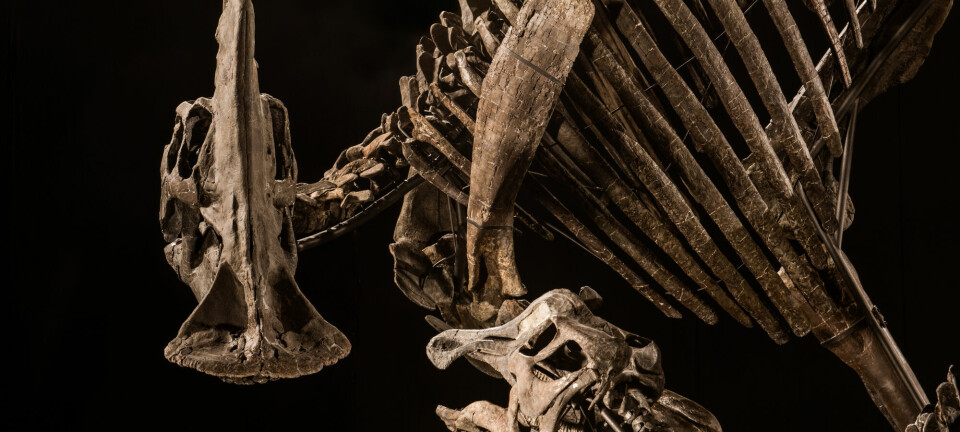
The Natural History Museum of Norway acquires two new dinosaurs
In December, it was announced that Norway would receive its first complete dinosaur skeleton. Now, the Natural History Museum reports that they have bought another dinosaur.
Last year, the duck-billed dinosaur Zelda was acquired for permanent exhibition at the Natural History Museum in Norway’s capital, Oslo.
Now, visitors will be able to enjoy seeing an additional dinosaur on future museum visits – a smaller dinosaur of the same species.
“I knew that Zelda, which the DNB Savings Bank Foundation bought last year, was found with a smaller skeleton of the same species, but I didn’t think it would be possible to exhibit both,” says Jørn H. Hurum.
He is a professor of palaeontology at the Natural History Museum.

Reunited after 74 million years
The two dinosaurs were first put up for auction together. Only the skeleton of the small dinosaur, which has been named Zara, was sold to a private collector.
The larger Zelda dinosaur was stored away until the DNB Savings Bank Foundation bought it last year.
After spending 74 million years together underground, the two dinosaurs will now be reunited at the museum in Oslo. There they will be exhibited together, telling the story of dinosaur babies, nests, herds, and growth.
Almost as large as T-rex
The duck-billed species Hypacrosaurus stebingeri could grow to be 7.5 metres long. The species' name means ‘near the highest lizard,’ a name it received because it was almost as large as Tyrannosaurus rex. Zara, however, is ‘only’ 3.5 metres long.
Like birds that nest on cliffs, Hypacrosaurus had specific nesting areas, according to Hurum.
The dinosaurs will eventually be mounted with the help of a steel structure that will hold the fossilised bones up for display. The exact date when they will be available for public viewing is not yet known.
———
Read the Norwegian version of this article on forskning.no





































